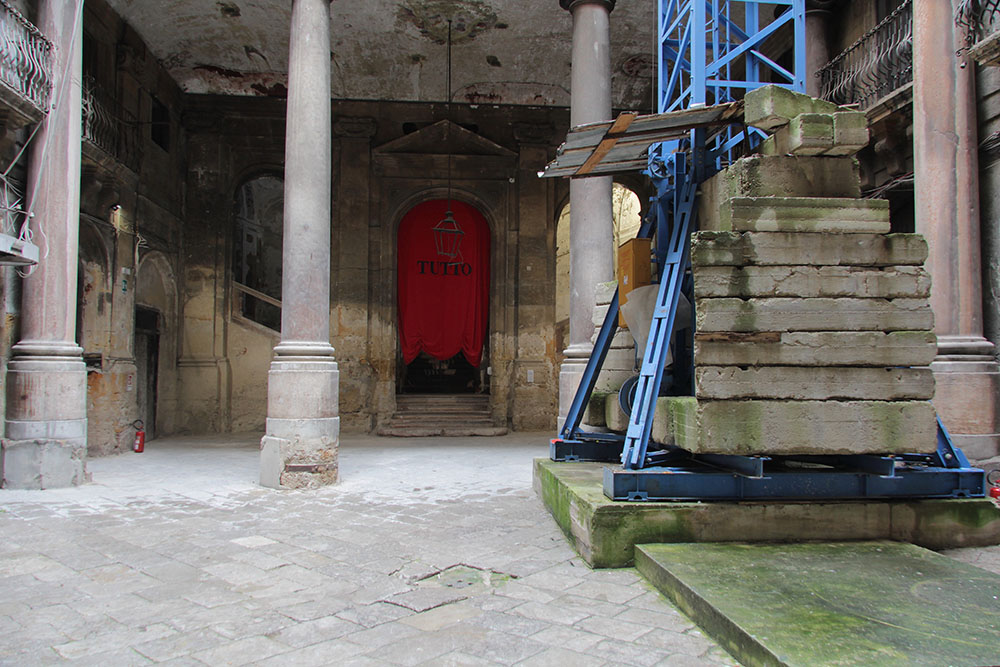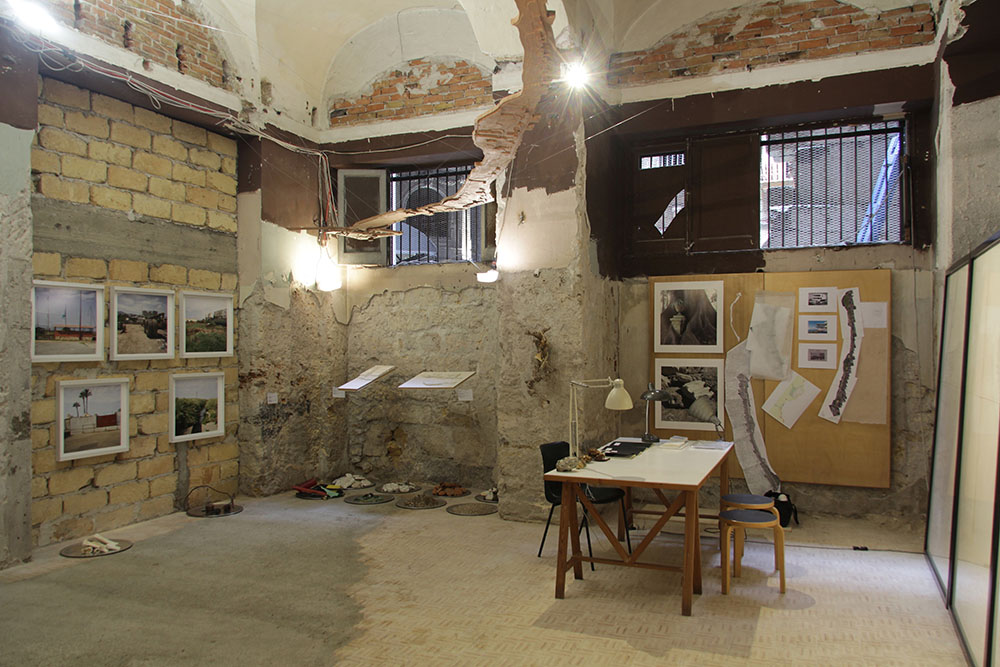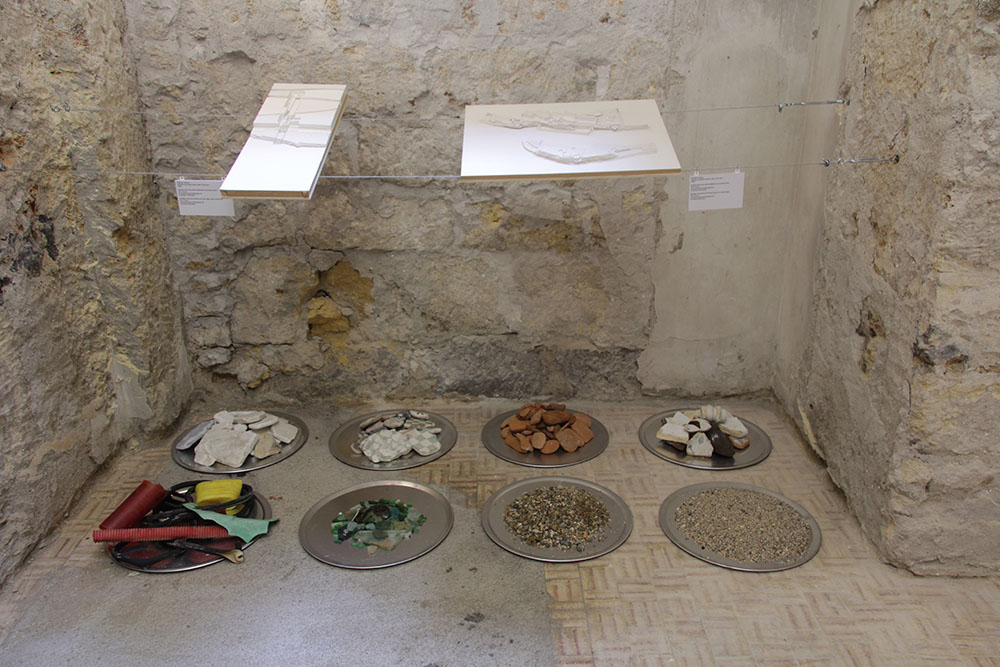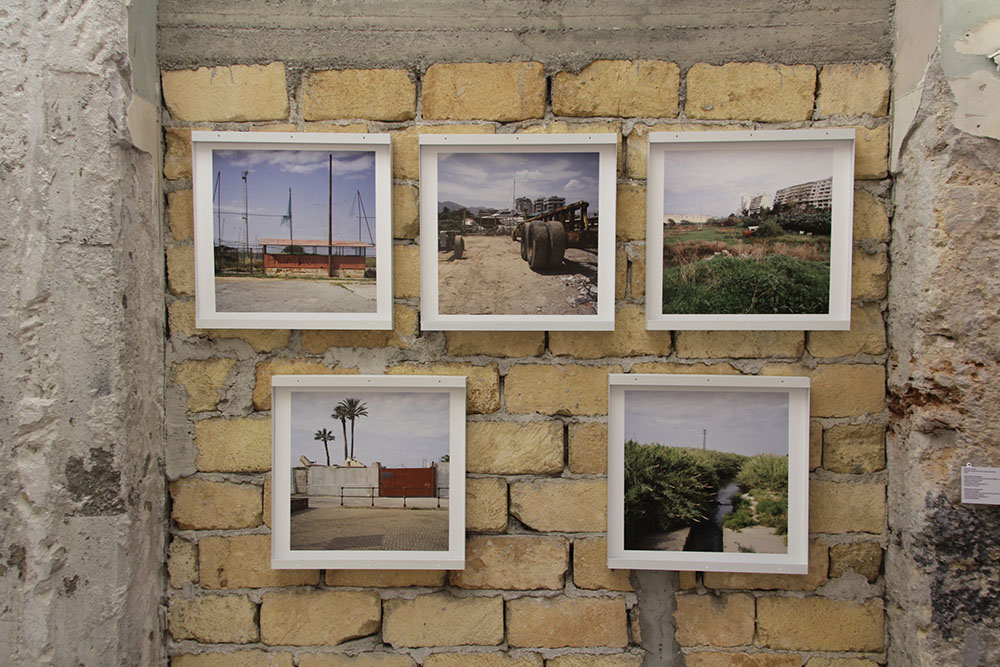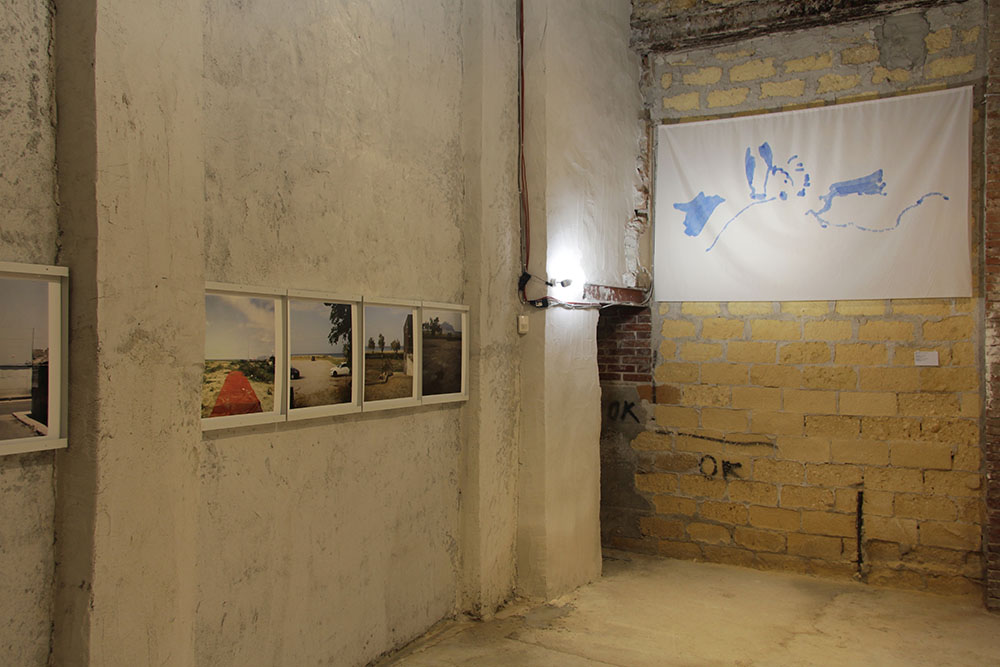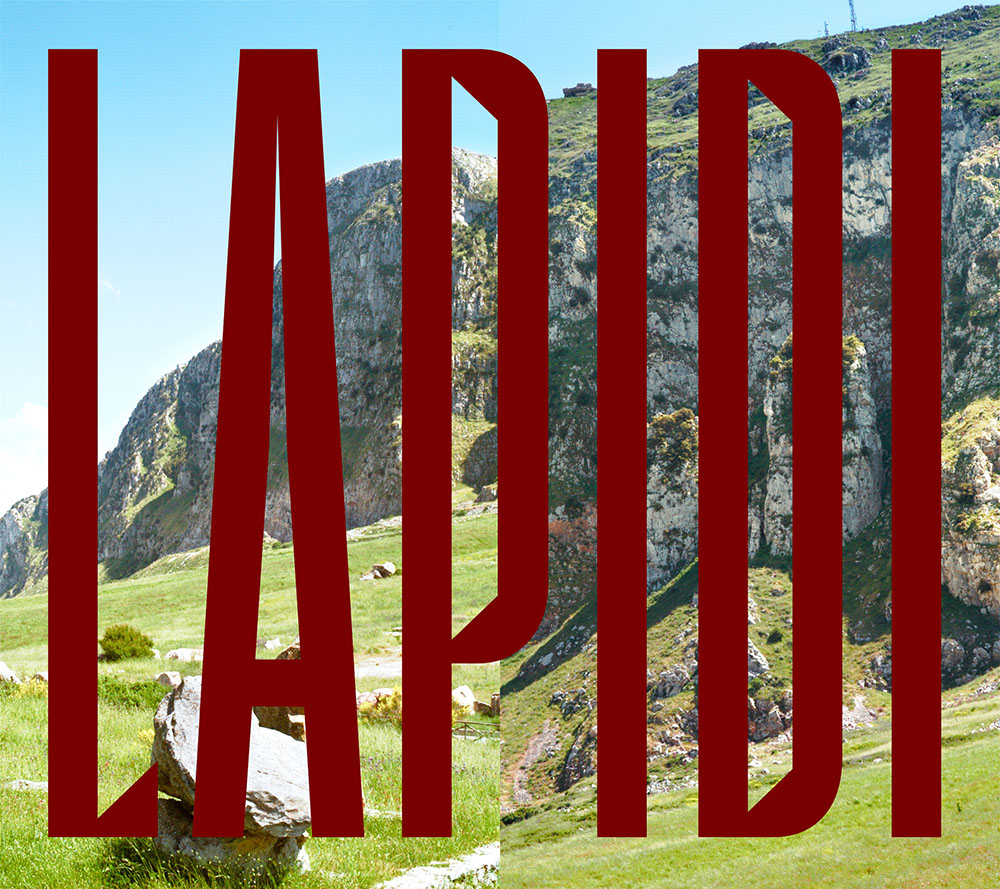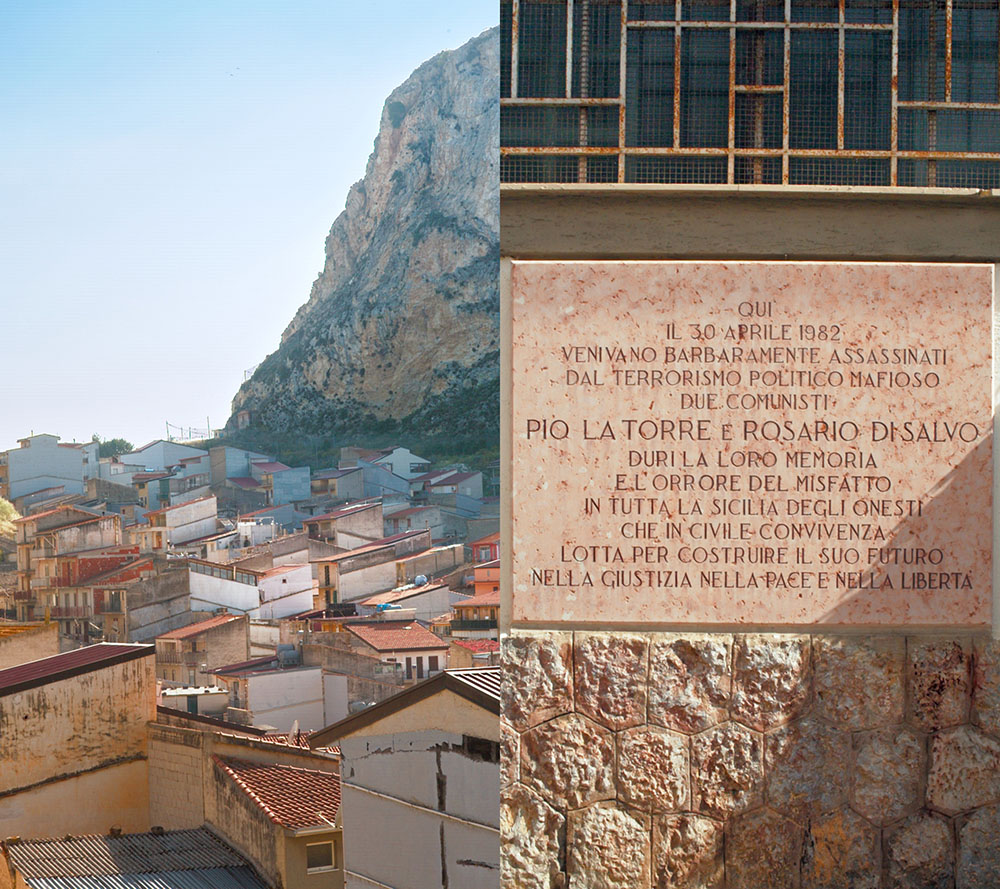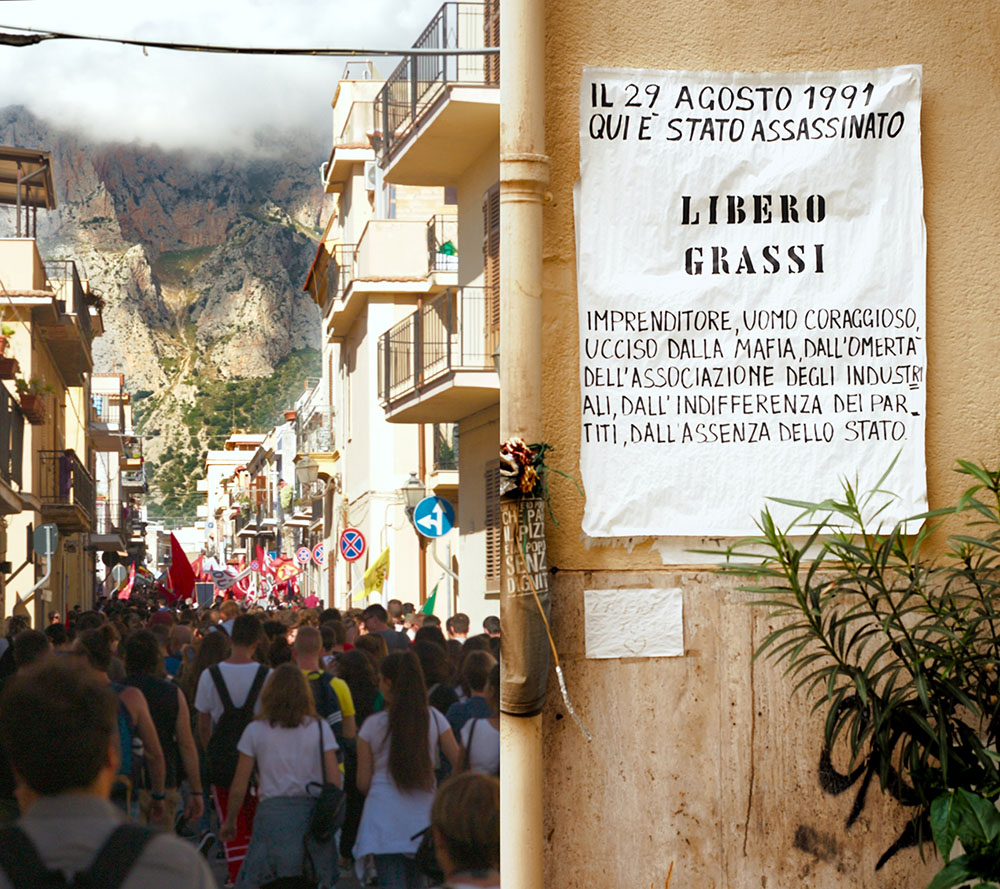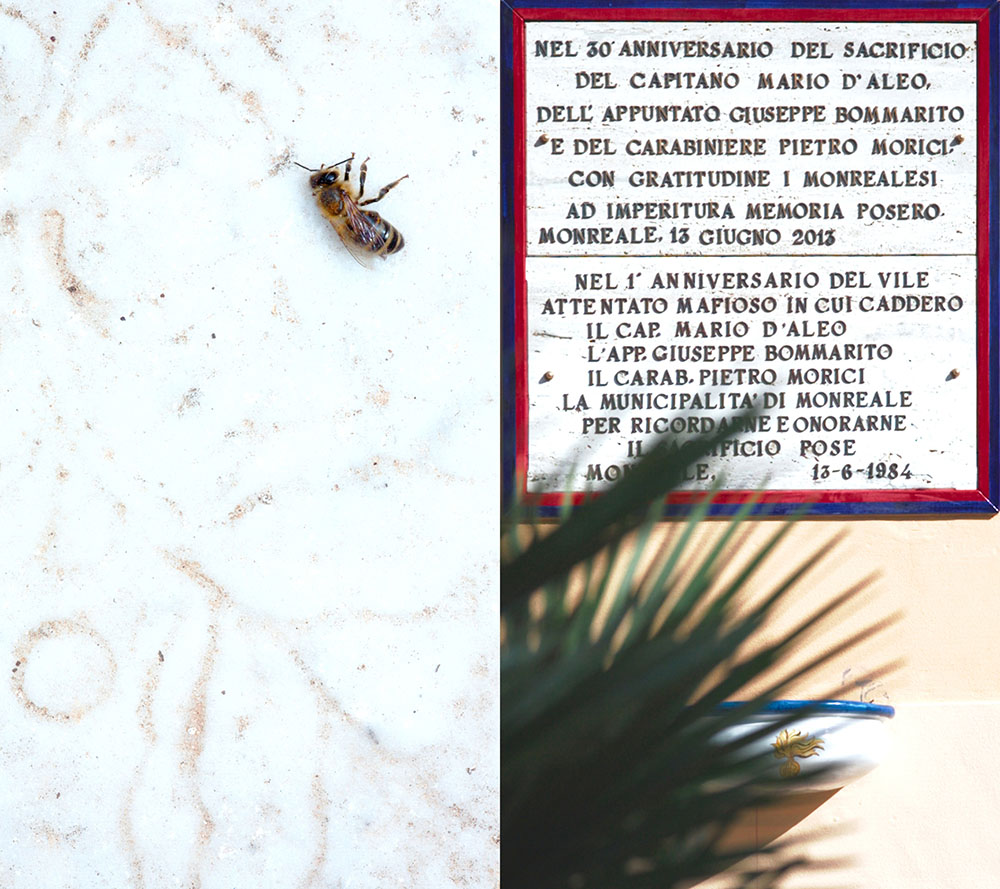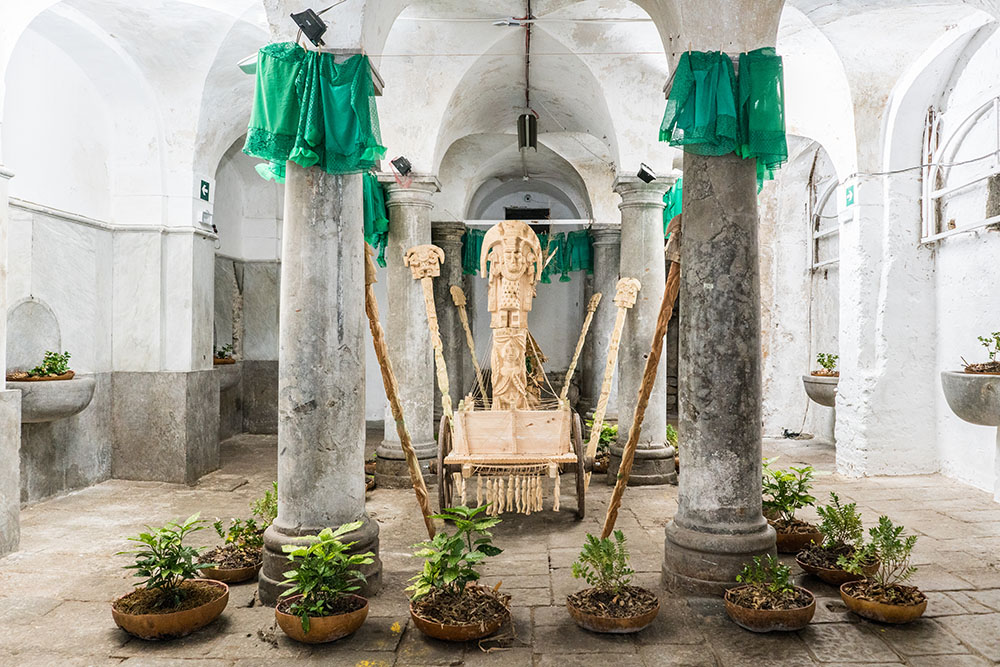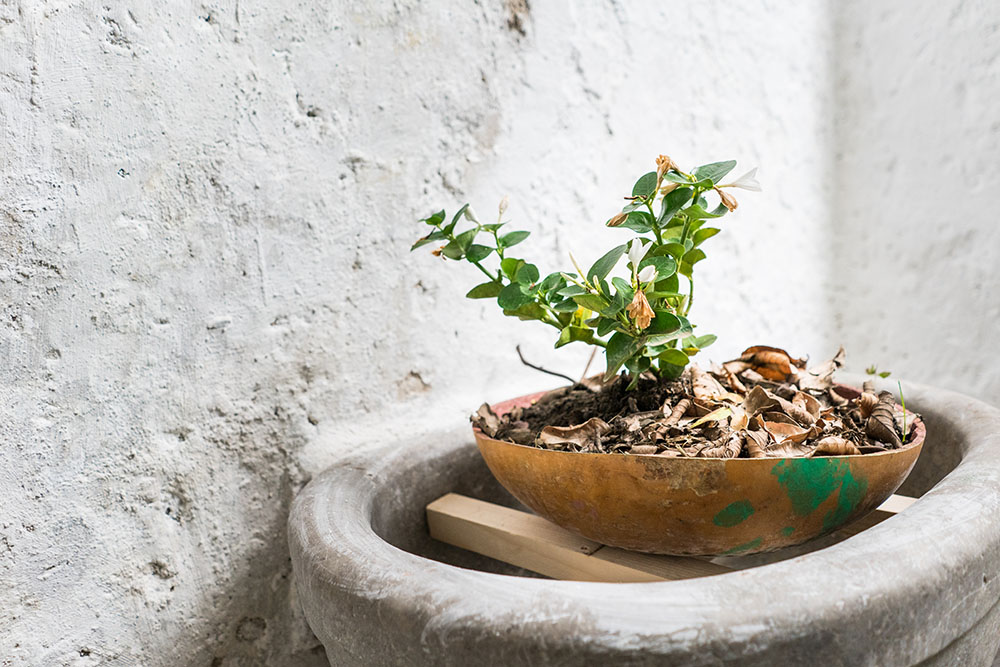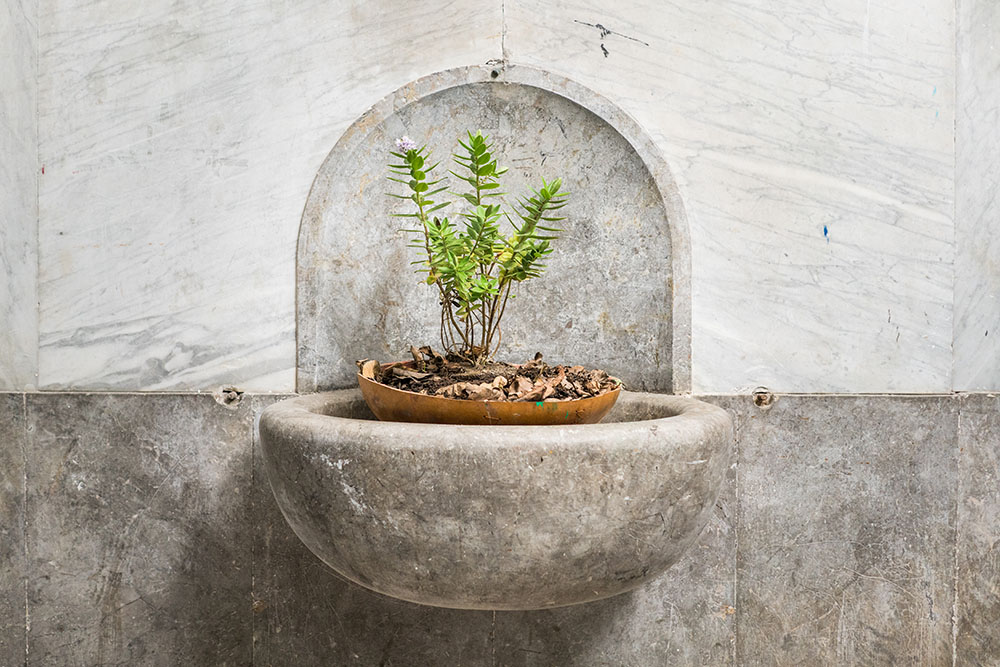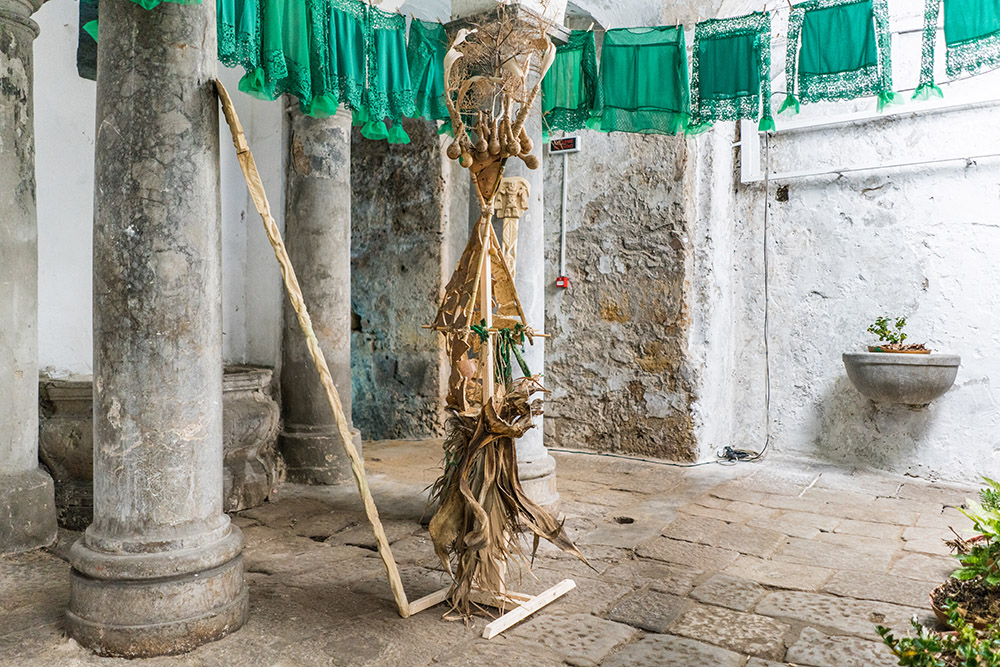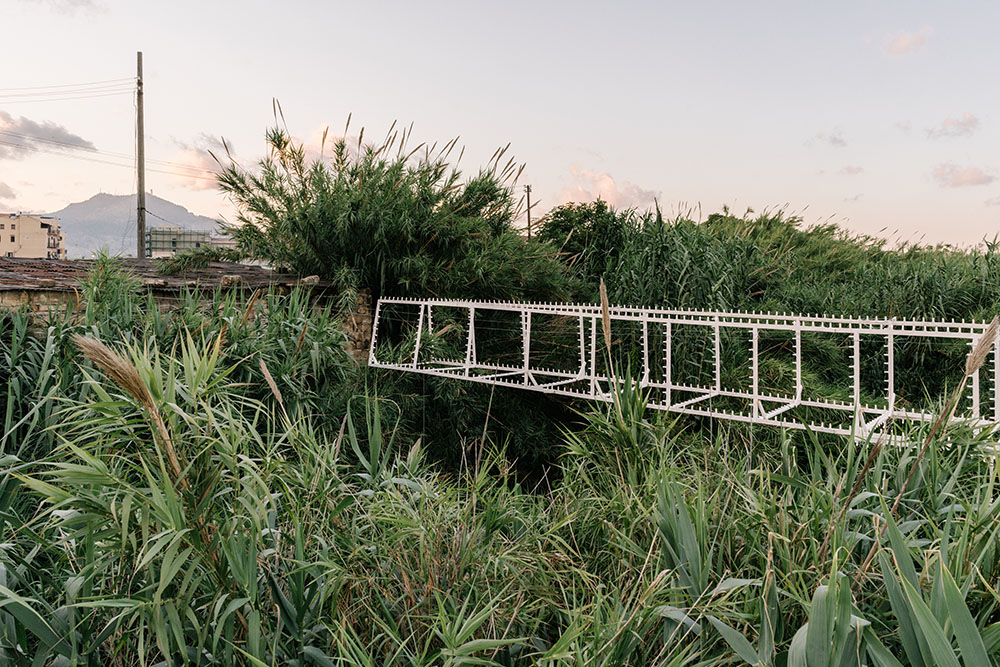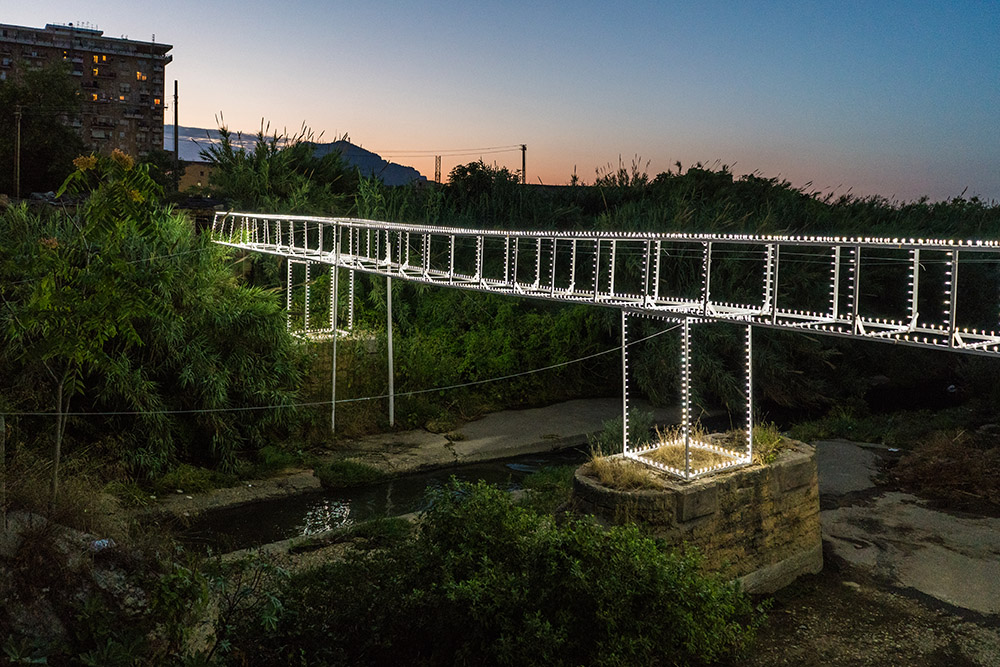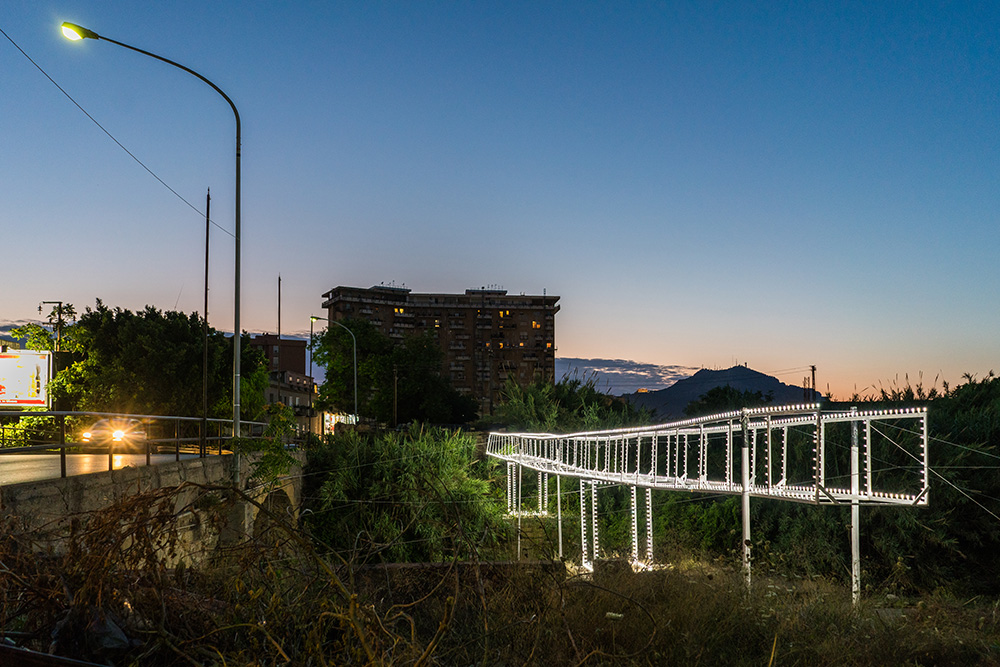BIENNALS: Manifesta 12-Palermo,City on Stage,Part I
 Manifesta 12, the European nomadic biennial, presents the work of 50 artists to the public at 20 different venues in Palermo. A network of events including artistic installations, videos, performances, urban actions, and literary projects constitutes “The Planetary Garden. Cultivating Coexistence” and has three major axes: “Garden of Flows”, “Out of Control Room” and “City on Stage”. In this article we focus on “City on Stage” (Part II).
Manifesta 12, the European nomadic biennial, presents the work of 50 artists to the public at 20 different venues in Palermo. A network of events including artistic installations, videos, performances, urban actions, and literary projects constitutes “The Planetary Garden. Cultivating Coexistence” and has three major axes: “Garden of Flows”, “Out of Control Room” and “City on Stage”. In this article we focus on “City on Stage” (Part II).
By Dimitris Lempesis
Photo: Manifesta 12 Archive
The starting point of the curatorial project “The Planetary Garden. Cultivating Coexistence” of the Manifesta 12-Palermo is the cultural syncretism inherent in both the natural world and in the past and present of Palermo. Manifesta 12 takes on the botanical metaphor of the garden designer and philosopher Gilles Clément who sees the world we inhabit as a garden to be tended. “Festival of the Earth (Alaraagbo XIII)” is a processional performance by Jelili Atiku, incorporating the sacred rite of walking with carrying plants, earth, and sacred sculptures and the production of sound to explore issues of migration and immigration from an allegorical and metaphorical perspective. Working with a concept of allegory related to the vegetable kingdom, the project highlights the crucial role of land for life on the planet. It draws elements from the Palermo’s history, knowledge and celebration of the Santa Rosalia procession, but also from references to the ancient, archetypical figure of the Green Man, as well as Yoruba and West African myths, legends and beliefs. The procession symbolizes the celebratory intermingling of religious and cultural traditions and will culminate in an installation at Palazzo Costantino. Matilde Cassani operates on the boundary between architecture, installation and performance. “Tutto” reworks the traditions of the Sicilian Baroque to reveal the complexity of the cultural influences coexisting in the Sicilian capital today. Specifically conceived for Palermo’s Quattro Canti, which wasdecorated with specially-made festive velvet drapes, the show involves a series of small coloured papers bearing messages and images that will explode in the air. In the following days, a lenticular photograph of the embroidered drapes, a number of the papers. The project underlines how the idea of the celebration serves to describe a complex system of political, social and cultural expressions. Roberto Collovà is an architect based in Palermo whose work draws on other creative fields such as the visual arts and photography. In “Giardino di giardini. Azioni sulla Costa Sud” the mise-en-scène of a studio, the workplace of the architect, who puts on display models, detritus, collages, experiments, photos, drawings and maps that express a living archaeology of the south coast. The intervention is a reflection on the changes in the geography of the coast between 1950 and 1980. The habit of pouring rubble from the northward expansion into the sea created artificial promontories and wide beaches of detritus all along the coast. The popular tradition of “bathing establishments” along the 5 kilometers of the coast came to an end due to the pollution of the water and the dangerous state of the sea-beds. The two coasts, one visible and the other buried, merge into a single strip of new land. Is it possible to imagine it, from one end to the other, as a park? Part of the garden of gardens becomes the project for traditional lilluminations that will design the crossing on the stone pylons of the old railway bridge. “Videomobile” by the artist duo Masbedo (Nicolò Massazza and Jacopo Bedogni) is an old van turned into a “video-cart” which presents on its screens the locations of film-sets in Palermo, investigating the history of the city, with a special focus on themes such as the dynamics of power. “Videomobile” thus becomes a moving laboratory that acts as a workspace and also serves as a stage for performances that will take place during the period of the Biennale at venues such as the States Archives, the Arena Sirenetta in Mondello and the Monte Pellegrino. When parked, the van becomes an interactive video installation housed in the atrium of Palazzo Costantino, with monitors and screens that act as a narrative device. Through this project, produced in collaboration with the Regional Film Library of the State Archives of Palermo, the Sicilian Film Commission and the National Film Archive in Rome, Masbedo aims to bring video performance to the streets of Palermo, concentrating on the tradition of early film, when traveling cinemas projected films from vans. Yuri Ancarani’s works are “Whipping Zombie” and “Lapidi”, two videos that aim to explore the contemporary metamorphoses of the practices of memory, in relations to the traumas and bloody wounds of collective history. “Whipping Zombie” reflects on the ritual linked to the Caribbean cults of trance and possession, in which the inhabitants of a remote village in Haiti perform the gestures and the dynamics of their terrifying past as slaves. In “Lapidi” the artist films the memorial tablets that honour the memory of the magistrates, civilians, journalists, police officers and all those to whom a monument has been devoted for having been victims of violence in Palermo. The video is a sequence of silent shots, in which the memorial tablets become video sculptures. Nora Turato’s work “I’m happy to own my implicit biases (malo mrkva, malo batina)” combines performance and voice, exploring the linguistic and cultural syncretism of the city of Palermo. The project describes the Sicilian tradition of the called donas de fuera, that is “women from elsewhere”, who at the time of the Spanish Inquisition were treated as outcasts due to their unconventional powers and behavior. It offers an opportunity to reflect on the dimension of “elsewhere” understood as a space of emancipation within a contemporary culture that increasingly promotes the concept of inclusion as a deterrent to diversity and change. The installation-performance takes place in the Oratorio di San Lorenzo, which acts both as a stage for the performer and stalls for the audience, a “different” space infested by the murmuring and whispering of stories kept quiet, popular myths, clichés, commonplaces, and possible forms of resistance to sexist and cultural impositions. Giorgio Vasta presents creative writing workshops and podcasts available on the Manifesta 12 app entitled “City Scripts”. Palermo, a city made of space and time, and five narrators, three indivuals, Fulvio Abbate, Emma Dante, and Giorgio Vasta, and two groups, young students between twenty and twenty-five years old from the creative writing course taught by Vasta together with Letizia Gullo and VacuaMoenia. City Scripts, which is also an exhibition at the Teatro Garibaldi, is the description of five fragments of Palermo, five texts that will be made available as free podcasts on the Manifesta 12 app, five “visions to listen to”, five micro-narrations that combine wordscape and soundscape. Wu Ming is a collective of writers and activists born in Bologna in 2000, currently composed of Roberto Bui (Wu Ming 1), Giovanni Cattabriga (Wu Ming 2) and Federico Guglielmi (Wu Ming 4). They present the installation and city walk entitled “Viva Menilicchi!”. Many places in the city of Palermo are linked to the period of Italian colonialism (1869 – 1945) and its legacy, which is still very much present in the economic interests of Italian companies in Libya, Eritrea, Ethiopia and Somalia and in the flux of migrants who set out from those lands to reach the Sicilian coastline. “Viva Menilicchi!” were the words shouted by the socialists and anarchists of Palermo during the demonstration against colonialism in March 1896, one of the first in Europe, immediately after Italy’s defeat in the Battle of Adwa at the hands of the Abyssinian troops of the Negus Menelik II. On 2/10/18 Wu Ming 2 will lead a walk through the city, during which various voices will combine to recount forgotten stories. The project will also be present throughout the Biennale at the Teatro Garibaldi, with an interactive path created in collaboration with the Palermo-based collective Fare Ala. Marinella Senatore’s project “Palermo Procession” focuses on the idea of narration as experience that can be explored through non-hierarchical learning, self-teaching and the creation of an active community. The procession, which sets out from Piazza Santa Chiara and arrives at the Foro Italico, reflects Palermo, a dancing city, in continuous movement. To provide a more complete vision, an exhibition at the Chiesa SS. Euno e Giuliano describes the preparatory process of particpation in the procession. For the project “New Palermo Felicissima“, Jordi Colomer has created a lay procession on boats in the sea, setting out from the Caletta Sant’Erasmo and heading along the South Coast. On board are exponents of the various communities of the city of Palermo. A video shows the route, whose various stages are described in texts specially written by the Palermo-born writer Roberto Alajmo. In urban terms, Caletta Sant’Erasmo is composed of a series of old buildings and historic architectures in a state of partial abandonment, new buildings in the outskirts, a small beach, and a quay for small ships. A combination of heterogeneous elements which allows us to define the area as a place that is suspended, but at the same time capable of serving as a territorial intermediary. The creation of a garden in the ZEN quarter is based on the process of transformation of an abandoned area into a green space for public use. In his theoretical path, the conceptual key and title of this edition of the Biennale, Gilles Clément in “Becoming Garden” develops the theory that the whole planet is like a single large garden, and humankind its gardener. A garden is an opportunity to develop collective thoughts that meets a contemporary need to care for our own spaces. The project comprises a programme of meetings, workshops, and guided visits to establish an ecological relation of active exchange between citizens, garden and nature. Becoming Garden explores the ways in which it is possible to improve living conditions in Mediterranean environments, which are subject to effects of climate change that are already visible in the landscape. Each participant becomes a landscaper-gardener of space, and experiences the creation of favourable soil fertility conditions, the reduction of waste materials, and the conservation of existing biodiversity. The project has been developed in collaboration with Laboratorio Zen Insieme, Ortocapovolto and Coldiretti Sicilia. Rotor is a Belgian collective of architects and designers interested in the various materials used in the field of industry and building, especially in relation to the resources used, the waste materials created and the ways in which they can be recycled. They present the environmental intervention “Da quassù è tutta un’altra cosa”. Forty years ago Pizzo Sella, the central hill of the Monte Gallo to the north of Palermo, was colonized by a residential project. Following the traces of human beings and animals, Rotor discover an ancient mountain path that joins the building complex to the Monte Gallo nature reserve. Close to the top, the collective transforms the concrete skeleton of an unfinished house into an observation point for breathtaking views. From high up, the disfigured hill thus becomes a device for healing, offering a form of relief from its long exploitation. From Via Maqueda, the main axis through the city of Palermo, which opens up towards Monte Gallo, a video featuring images of the hill invites the spectators to set out on a walk of exploration towards the path.
Info: Organizers: Manifesta Amsterdam and Il Comune di Palermo, Various venues, Palermo, Duration: 16/4-4/11/18, Days & Hours: Tue-Sun 10:00-20:00 With the exception of: Chiesa di Santa Maria dello Spasimo (Tue-Sat 9:30-18:00) and Volpe Astuta (Tue-Sat 10:00-19:00), http://m12.manifesta.org




